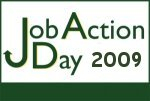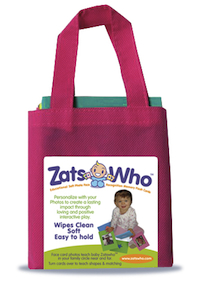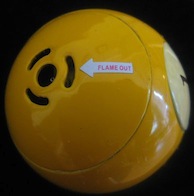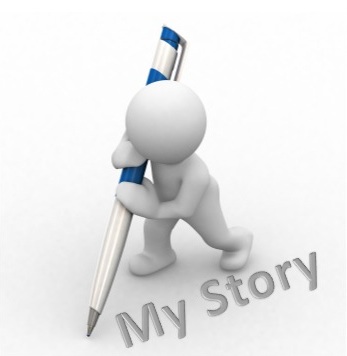Today is Job Action Day 2009, a day for job-seekers to take action steps right now — today — to move forward in their careers. The Quintessential Careers family of blogs (including this blog and Quintessential Careers Blog, Quintessential Resume and Cover Letter Tips Blog, and Career Doctor Blog), is looking at a promising aspect of the currently employment scene — turning unemployment into entrepreneurship.
For Job Action Day 2009, Quintessential Careers and a cadre of writers and bloggers are targeting several areas as offering bright spots of opportunity. In this entry, we look at stories of laid-off and displaced workers who are developing and marketing inventions:
Cheryl DelMastro
The economy forced my hand into making changes to survive financially.
I’m a Florida real-estate broker who owned a successful agency of 22 realtors strong. Once my agency all but closed due to the plunging housing market and loss of income, I chose to “reinvent” myself. Wanting to also set a good example for my three children, turning a negative into a positive was my mission in becoming a “mompreneur.” Within 18 months of sheer determination and hard work, my invention Stay with Me TM Baby Socks are currently in select Target stores nationwide. Mead Johnson will be test-marketing them this fall in hospital gift bags for new moms in the Northeast.
Always looking for the silver lining, I knew I could find a promising future in spite of the economic times in which we are living. So many people are now “reinventing” themselves as well. Whether going back to school or changing industries, we are reassessing our direction and purpose in our lives.
in spite of the economic times in which we are living. So many people are now “reinventing” themselves as well. Whether going back to school or changing industries, we are reassessing our direction and purpose in our lives.
It’s all about taking the good out of a difficult situation and making a positive difference for you and your family.
Angela Larson
When let go from Wall Street in November 2008, I chose to chase a dream and start a toy company, Fierce Fun Toys. We now have our first product, Norman PhartEphant, on the market, a book, and two more prototypes in development.
Changing careers — shocking, but really a great move for my creativity, connection with my children, but still stressful financially, but I wouldn’t change a thing.
Trish Cooper
My story is one of entrepreneurship and the launch next month of my business venture resulting from the loss of my job.
This past January I lost my job after my company in which I was a CFO merged with another and moved out of state. When the day finally arrived, even knowing in advance I would no longer have my job, I was still somehow shocked, hurt, and my self esteem was at an all-time low. I had been sending out resumes without success and I was now out of work. All I could think was “I’m middle aged … what do I do now??”
After two days of my own “pity party”, I decided to take a deep breath while I figured it out and spend some of my new found free time with my beautiful grandbaby.
One activity that my granddaughter and I really took pleasure in was looking at family photos. As I was teaching my granddaughter about family members through photos and trying not to let smudge or crinkle the pictures, I was struck with an idea. I began to make interactive soft face photo-recognition flash cards for her that she could hold in her own little hands. The face photo-recognition game that we played is such fun and she was learning so much … when it struck me….
… Why not go for it and make a “real” game out of it? And that’s how the idea and my new business venture for my new interactive infant and toddler game Zatswho™ was born! Zatswho™ flash cards teach about family through face recognition, allowing you to share precious memories with little ones in a very hands-on and interactive way. They are designed to also help children learn about colors, basic shapes, and sequence. The flash cards, as well as the colorful tote they come in, are soft, easy to grasp wipe clean easily and are non-toxic.
After doing due diligence I determined it was worth the risk to go forward even if starting out I had to use my own personal funds. It’s been an exciting time for me and my family. I come from a close-knit family that loves getting together, sharing meals, going on outings, and just enjoying life and each other.
For me, watching my granddaughter’s face light up as she points out “Mommy,” “Daddy,” “Grand-poppy,” and other family members is an incredible thrill that never gets old! Zatswho™ flash cards have kept my granddaughter interested in more ways than I anticipated. Now that she’s grown into a toddler, she enjoys identifying different family members by name. She hugs and kisses the pictures, traces the shapes with her little fingers and is learning about matching as well. She carries her tote containing “her little treasures” wherever she goes!
The philosophy behind Zatswho™ is to fully embrace the core concept of love of one’s family including includes the need to know about family members, as well as the pursuit of wisdom by intellectual means through simple educational and developmental products. Our toys and games will be geared toward encouraging caregiver interaction with babies and toddler-aged children
I’m learning so much each day. Although I’m not a success story yet, I am a good example of not allowing the economic slowdown or my age to stop me from doing something out of my comfort zone and moving forward. I could never have imagined I’d be doing this. I have prepared a Business Plan to keep me focused.
I am to the point that I have begun to take orders. I’m having my website developed, getting ready to launch my new business venture next month in time for the holidays and then to the NYC Toy Fair in February, and I have just applied for an SBA micro-loan to help continue to fund my start-up.









